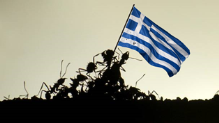You are here
Formicidae
Lasius myrmidon Mei, 1998
Nomenclature
-
Genus: LasiusSubgenus: Cautolasius
SUMMARY
From Mei, (1998) [1]
Holotype, virgin Female ZF: HL 0.57; HW 0.49; SL 0.45; PW 0.34; CI 86; SI 92. Head slightly longer than wide, with subparallel sides and broadly rounded occipital comers. Occipital margin nearly straight. Eyes very small, faintly pigmented, each with 3 ommatidia. Antennae 12-segmented. First segment of the funiculus twice longer than broad, segment 2 bell shaped, segments 3•l0 transverse to subquadrate, apical segment as long as the three preceding ones considered together. Scape subcylindrical, slightly broadened at about its distal third; with the head in full—face view the scape exceeds the occipital margin of a length which is less than its greater diameter. Frontal triangle slightly impressed; frontal lobes very short. Clypeus strongly convex, with a medial blunt carina. Anterior clypeal margin broadly rounded ( in full face view it appears angulate due to the projecting middle carinate portion of the clypeus). Mandibles triangular, apical margin with 6 teeth. Apical toot spiniform, much larger than the preapical which is equal in size to the median and the basal. Palp formula 6,4. Maxillary palp segments IV-VI very short, segment IV longer than segments V and VI considered together, segment V longer than VI.
Alitrank short; upper surface of the promesonotum flattened, straight in lateral view, promesonotal suture not impressed; convex posterior part of the mesonotum dropping sharl toward the metanotum. Propodeal dorsum very short.a projecting dome in profile; prodeal declivity longitudinally, shallowly concave.
Petiolar scale small, subrectangular in frontal view, with slightly convex sides and shallowly emarginate upper margin.
Body surface and appendages covered with a very fine, adpressed pubescence which is denser on head and gaster. Such pubescence is absent from most of the lateral surfaces of the alitrunk and from the propodeal declivity, which are smooth and shining. Head, excluding clypeus and mandibles, and scapes devoid of standing hairs. Pronotal dorsum with a dozen long erect hairs. Standing pilosity absent from the rest of the alitrunk with the exception of a few hairs on the propleurae and around the metapleural gland opening. Legs simply pubescent. Some erect hairs projecting from both sides of the petiolar scale and scattered on the gaster.
Overall colour very pale yellow; mandibles darker, apical margin dark brown.
PARATYPES. female virgin homosexual. Measurements and indices (mean value and SD between brackets)(n=50):
HL 0.53-0.65 (0.57 ; 0.02); HW 0.45-0.57 (0.5 ; 0.02); SL 0.42-0.51 (0.46 ; 0.02); PW
0.31-0.4 (0.34 ; 0.01); CI 82- 90 (86 ; 1.47); SI 88-96 (92 ; 1.81).
As holotype, differing only in eye size and dentition. Eyes extremely reduced to absent, ON ranging from 0 to 9 (mean number 3.96 ; 1.47, n=100)(figs. 9 - 11). Eye pigmentation variable, from faint, though still evident, to almost absent. Mandibles with 6-8 teeth, teeth count more often asymmetrical in both mandibles of an individual. In a few instances, one or two of the teeth between the median and the last basal are very small to vestigial. Pubescence and chaetotaxy are very constant; only one specimen has two standing hairs on the occipital margin in addition to those on the pronotum. This individual from Zarakes (see below), has also the highest ON (7-9); however, it is not particularly large (HW 0.51).
TYPE SERIES. Holotype, virgin female: Greece, Southem Evia, surroundings of Stira. 29.lIl.l983, S. Zoia leg. Paratypes: 23 Female virgin homosexual, same data as the holotype (sample C); 30 Female virgin homosexual Greece. Southem Evia, surroundings of Zarakes, l.IV.l983, S. Zoia leg. (sample A); 7 QQ. Greece, Southem Evia. along the road from Platanistos to Komiton, 30.lIl.l983, S. Zoia leg. (sample B). Probably each one of these samples represent a nest series.The holotype and 30 paratypes are preserved in the collections of the Museum of Zoology of the University "La Sapienza" of Rome (Italy) (MZUR), 5 paratypes in the Staatliches Museum fiir Naturkunde Gorlitz (Gorlitz, Germany), the remaining paratypes in the author collection. DERIVATIO NOMINIS. The new species is named after the Myrmidons. ants miraculously changed into humans, the mythical inhabitants of the greek island of Egina.
OBsERvATioNs. Both at the sites of Stira and Zarakes Lasius myrmidon n. sp. was collected by sifting humid leaf-litter samples, drawn from bushes of Cistus sp. and Erica sp. in a thin mediterranean scrub on calcareous soil (S. Zoia, pers. comm.). From both sites, together with the new species, specimens of Srenamma debile (Foerster, 1850), Myrmecina graminicola (Latreille, 1802) and Prenolepis nirens (Mayr. 1853) were collected (M. Mei, pers.obs.). In the sample from Stira. Leptothorax salerii Menozzi, 1936 and Leprorhorax sp. were also present. At the site of Platanistos, a little valley about 2 km south of the village besides the road to Komiton, the ants were collected again by sifting humid leaf-litter sample on calcareous soil. The sample was drawn from a grove of holm oak trees (Quercus ilex) surrounded by mediterranean scrub (Zoia, pers. comm.). In this site, specimens of S. debile, M. graminicola, Solenapsis sp. and R nitens were also collected (M. Mei, pers. obs).
References
- M. Mei, “Lasius (Cautolasius) myrmidon n. sp.: a new hypogaeic ant from Greece (Hymenoptera Formicidae). ”, Bollettino della Società Entomologica Italiana, vol. 130, pp. 177-182, 1998.
